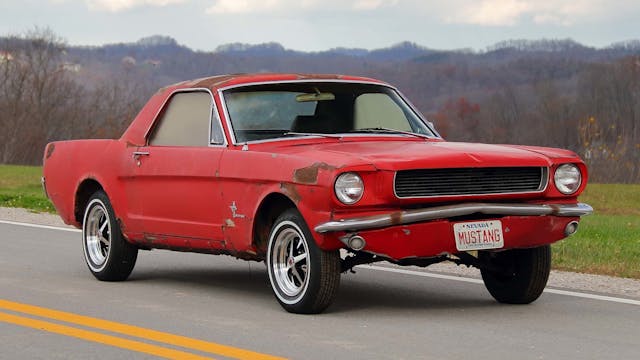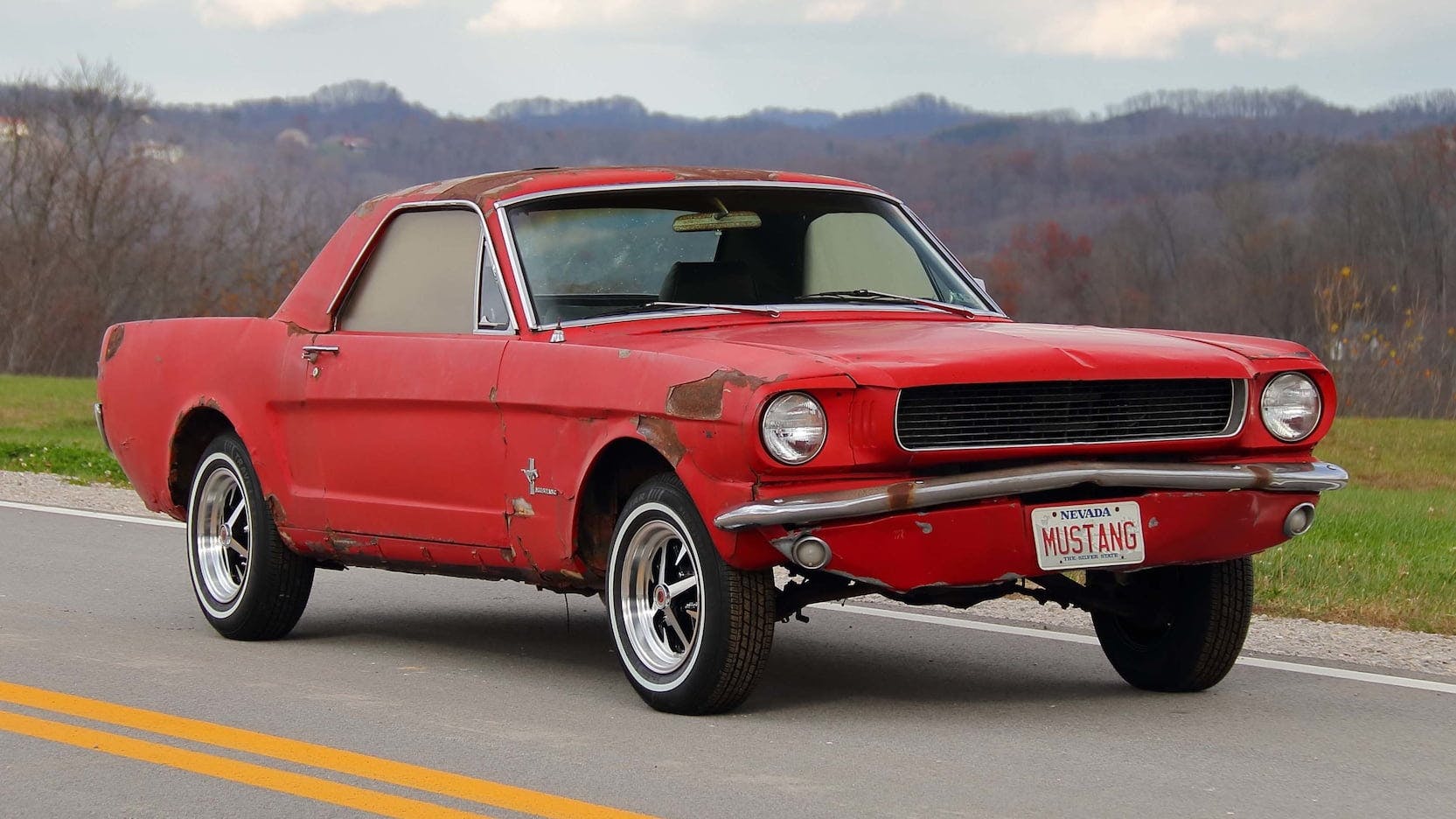Media | Articles
8 oddball cars to kick off 2021 with a splash of strange
2020 may be behind us, but that doesn’t mean everything is back to normal in 2021. At least as far as car auctions, it’s already clear that January 2021 won’t be like the last year. Ordinarily we’d be looking forward to the flurry of auctions happening in and around Scottsdale, Arizona as well as Mecum’s mega-sale in Kissimmee, Florida. While both Scottsdale and Kissimmee are still happening, the Scottsdale auctions are either altering their formats or aren’t taking place at all (Barrett-Jackson Scottsdale is postponed until March) and Mecum will have safety restrictions in place for Kissimmee.
There are nevertheless plenty of cars to get excited about, and that includes the rare, esoteric, or downright weird cars that we are always delighted to see in the spotlight. Here are the eight oddballs that stood out to us most, each of which will be up for grabs this month.
1947 Mercury Series 79M Marmon-Herrington 4×4
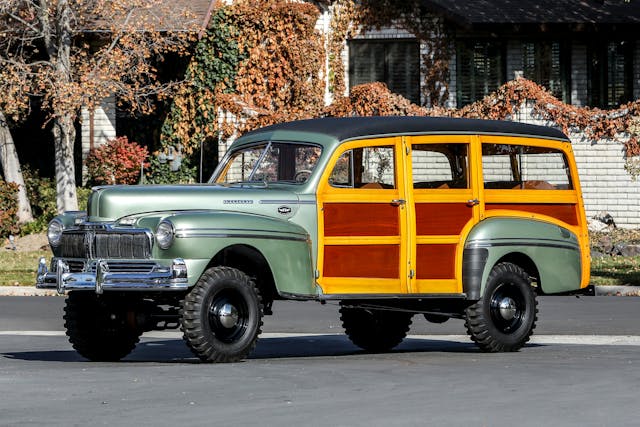
Worldwide, Lot 47
Estimate: N/A (no reserve)
Long before all-wheel-drive SUVs dominated our roads, one of the few options for a serious utility car was a tall, awkward-looking, expensive Ford from an outfit called Marmon-Herrington. The Indianapolis-based shop started converting Ford wagons to four-wheel drive back in the 1930s, and in the process would remove the body, beef up the chassis, bolt in the four-wheel drive system, and raise the ride height. Marmon-Herrington conversions continued in the postwar years, but they were largely done by hand and could as much as double the price of a standard Ford or Mercury. Few people could justify that kind of coin for a tall, rough-riding, and slow-going station wagon.
Marketplace
Buy and sell classics with confidence
According to Worldwide, the car heading to auction this month is one of just three Mercury Marmon-Herrington woodies known to survive. Offered from a collection of 20 woodies known as the “Steelwood” collection, it is represented as the only Mercury Marmon-Herrington from 1947 that is known to exist. Rare as these models are, we’ve seen a few come to market before. RM also sold a 1940 Ford for $252,000 in Arizona 2019, and a few months later sold a 1948 Mercury for $207,200.
2019 Runge RS010

Bonhams, Lot 121
Estimate: $225,000–$250,000
While it looks like some forgotten Porsche racer from the late 1950s or early 1960s, this car is from 2019 and it was built in Minnesota. And although the Porsche inspiration is obvious, it’s neither a kit nor a tribute car. For a few hundred thousand dollars, Christopher Runge will build you a bespoke spyder or coupe with a steel tube frame and an aluminum body, formed by hand and laid over a secondary aluminum frame for the panels.
This one has old-school touches: a 2.3-liter, 195-hp pushrod flat-four and four-speed manual, as well as toggle switches from an airplane, a dash clock from a MiG jet, and gauges that would look at home in an old 356. But it also has air conditioning. A car like this reportedly takes about 2000 hours to build and Runge has a two-year wait list, so here’s a chance to skip the line.
1956 Nash Ambassador

Mecum, Lot S85
Estimate: N/A (no reserve)
By 1956, most American car brands outside the Big Three were living on borrowed time, but that’s not to say the underdogs weren’t building fun and interesting cars. Take the funky-looking Nash Ambassador, for example.
Postwar Ambassadors used relatively advanced unibody construction, and the ’54 Ambassador with its “Weather Eye” system was the first American car to have an integrated heating, ventilating, and air conditioning system mounted up front. To capture the public’s attention, Nash also offered its 1956 and 1957 models in loud two- and three-tone color schemes, and an ad called it the “World’s Finest Travel Car!”
1954 Fiat 1100/103 Turismo Veloce Charmant Coupe by Vignale

Bonhams, Lot 127
Estimate: $175,000–$225,000
The Fiat 1100 was a versatile platform, available with several different sedan and coupe bodies as well as five-door estate, panel van, pickup, and minibus variants. There was even a sporty two-seat roadster called the 1100 Turismo Veloce (TV), and in the early days of Formula Junior the Fiat 1100’s four-cylinder was the engine to beat.
This 1100 is an oddball, though, because it is one of just 12 to wear bodywork designed by the prodigious Giovanni Michelotti while he was working at Vignale. It was ordered new by a wealthy attorney in Sicily with dual carbs, Abarth intake, Nardi exhaust and steering wheel, and Borrani wire wheels.
Such a distinctive car naturally attracted a lot of looks from passersby in postwar Italy. The owner apparently didn’t like the attention, so he parked the charismatic little Fiat in favor of a more practical (and boring) Mercedes sedan. Luckily, he kept the 1100 and drained it of fluids before putting it in storage in Palermo. After his death, it made its way to another collector in Italy with just 6012 (3736 miles) on it and little age to speak of. (Here’s a video of it after it got up and running.)
1971 Land Rover Range Rover Suffix A Convertible by SVC

RM Sotheby’s, Lot 116
Estimate: $40,000–$50,000
Back in 1983, the Range Rover was in its 15th year. The Evoque convertible was still decades away. Even though there was no open-top Range Rover available from the factory, that didn’t stop James Bond from driving a brown one in Octopussy, and a company based in Sussex, England called Special Vehicle Conversions (SVC) started converting classic Range Rovers in the 1980s to fill the resulting demand.
These SVC conversions are a very unusual sight, especially in the States, and this one has been restored. Buy it and you’d have the rarest, strangest Range Rover at the country club.
1960 Auto Union 1000 S

Mecum, Lot J196
Estimate: $15,000–$25,000
Audi was technically founded in 1909, but for many years the company’s signature four interlocked rings signified Auto Union, the 1930s four-way marriage of Horch, DKW, Wanderer, and Audi. So while the badge may be the same as the one on your lawyer’s A7, the word “Audi” isn’t anywhere to be found on this oddball up for grabs at Mecum Kissimmee.
The Auto Union 1000 had previously been badged as a DKW, and like most DKW automobiles, it was an affordable front-drive commuter car with a two-stroke engine, in this case a 981-cc three-cylinder with 57 horsepower. Auto Union did sell over 170,000 of these cars and there was even a sports version that shamelessly copied the look of the Ford Thunderbird, but on American roads they’re a rare sight.
1966 Ford Mustang Mustero
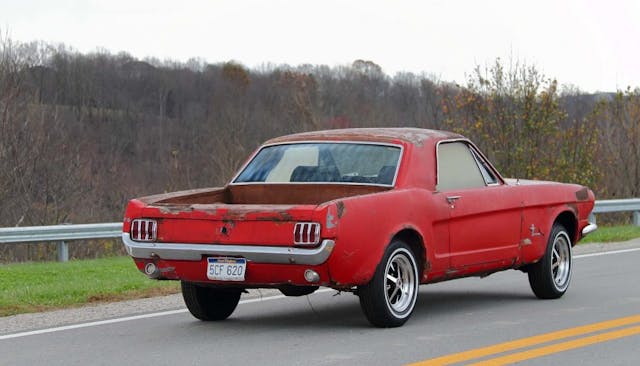
Mecum, Lot T240
Estimate: $75,000–$85,000
There’s nothing unusual or exotic about a ’66 Mustang. Cool, yes, but nothing especially out-there, right?. By some metrics it’s considered the second most popular classic car in America, right after the ’65 Mustang. Take a closer look at this one, though, and something doesn’t seem quite right. That’s because it’s weirder than a regular old ’66 notchback coupe. It’s a pickup.
While basking in the Mustang’s glowing debut, Ford considered some different takes on its groundbreaking pony car, like a four-door sedan, two-door wagon, and two-seat coupe. None of these ever made it to the showroom floor, but at the same time a dealer called Beverly Hills Ford came up with the idea to modify a few dozen notchback Mustangs into pickup trucks for sale to the public.
Called the Mustero (a portmanteau of “Mustang” and “Ranchero“), the conversion cost a very expensive $4000 and entailed altering the roof and glass, removing the trunk area and rear seats, and fitting a fiberglass truck bed in the back.
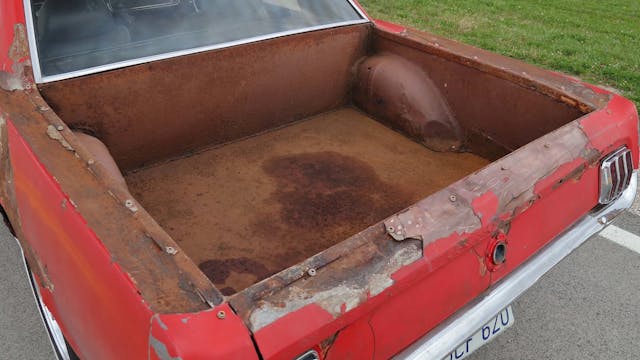
Actual production numbers for the Mustero aren’t crystal clear, but most sources say 50 were planned and Mecum claims just four are known to exist. Mecum also says in its listing that the example offered in Kissimmee is the very first one built. Found on the banks of a creek in West Virginia, it has a later 302 engine in it and no transmission. The pony car ute is offered in very rough “barn find” (or, in this case, “creek find”) condition, but at least Mustang parts are easy to find.
The $75,000 to $85,000 estimate for this Mustero seems ambitious. A pristine one showed up on eBay in 2017 with a “Buy It Now” price of $100,000.
1993 Cizeta V16T

RM Sotheby’s, Lot 139
Estimate: $600,000–$750,000
Designed by a former Lamborghini engineer and styled by Marcello Gandini (who penned the Countach and the Diablo), the Cizeta is nevertheless a lot more than just a Lambo by another name. And like all the best oddball cars, it has a neat story behind it.
After relocating to the U.S. while working at Lamborghini, Claudio Zampolli was servicing temperamental Italian exotics for wealthy folks and celebrities in California, including Eddie Van Halen and Sammy Hagar. He also wrenched on the Countach of music producer Giorgio Moroder, and the two Italians formed a partnership to make Zampolli’s dream supercar—one built around a transverse V-16—a reality.
The engine in question was similar to two Lamborghini Urraco V-8s stuck together to form a 6.0-liter V-16, mated to a ZF five-speed manual and nestled in a tubular spaceframe chassis. The V-16 sang out 547 horsepower and could push the car to a claimed 200-plus mph top speed.
Lamborghini’s interior guy, Bruno Paratelli, designed the leather-swathed cockpit and Gandini designed the aluminum body. With shades of Ferrari Testarossa on the sides and Lamborghini Diablo up front, plus four pop-up headlights, it almost looks like one of those fake cars you drive in a video game that didn’t want to pay licensing fees for a real one. But real it is, and after Moroder left the partnership, what had been Cizeta-Moroder simply became Cizeta.

Just nine were built, and that’s where this car enters the picture. A right-hand drive example, it was the 1993 Geneva Motor Show car and was bought new by the royal family of Brunei. Just a few years out from independence from the U.K. and awash in oil money, the sultan and his clan were at the peak of building their infamous car collection (the world’s largest) during these years. They ordered not one but three Cizetas from new. According to RM Sotheby’s, two of them wound up heavily modified by Pininfarina with different engines, but for some reason this Cizeta stayed at the distributor in Singapore and never actually got delivered to Brunei. It sat until last year, when the current owner bought it from Singapore and got the V-16 wedge back to running and driving condition. That can’t have been cheap.
Today, it shows fewer than 1000 km (620 miles), and most of those were reportedly from testing and promo appearances. Last summer is when the car made its way from Asia to the States, where it wound up for sale through the Miami-based dealer Curated. It is currently listed in the “Sold” section of that website, but when it was listed they were asking $725,000.
Like this article? Check out Hagerty Insider, our website devoted to tracking trends in the collector vehicle market.
